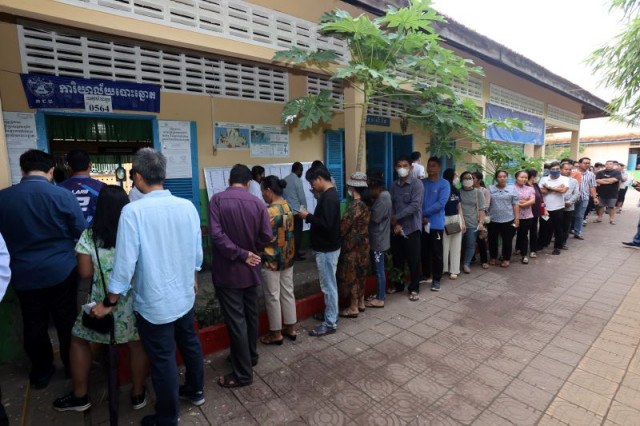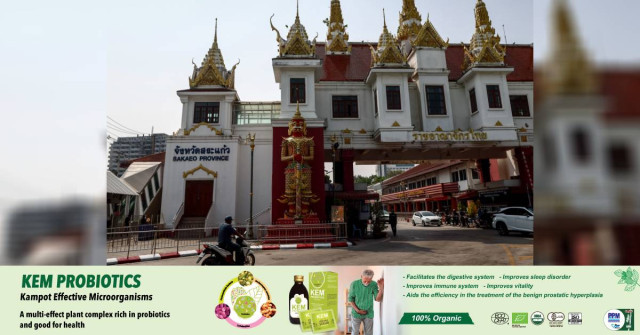Chinese-built modern railway key enabler to Kenya's Vision 2030
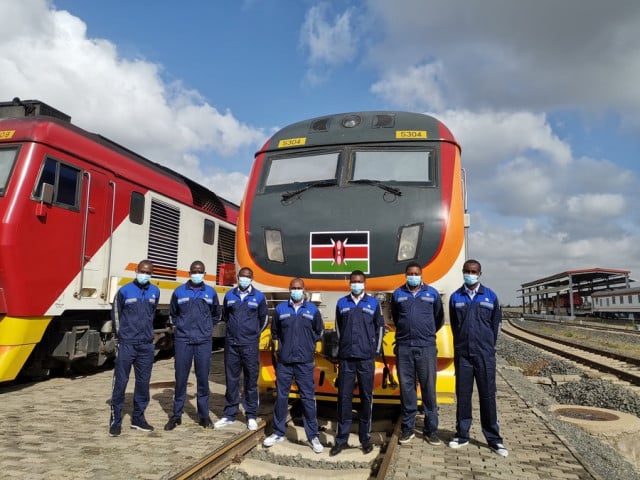
- By Xinhua News Agency
- August 15, 2022 9:15 PM
* As a strategic infrastructure project, the Mombasa-Nairobi Standard Gauge Railway (SGR) is aiding the realization of Kenya's two flagship socio-economic transformation blueprints -- the Vision 2030 and the Big Four Agenda.
* The SGR has enhanced Kenya's trade with neighboring countries and offered an economic lifeline to member states of the East African Community.
* Within the framework of the Forum on China-Africa Cooperation, the SGR is among many China-Kenya infrastructure cooperation projects which are leading the Sino-Africa cooperation.
NAIROBI -- As a veteran insurance sales agent, Farahana Mghoi used to spend seven hours on matatus, the public service vehicles in Kenya, from her hometown of Voi in southeastern Kenya to Nairobi to meet a potential client. It was both slow and tiresome.
Since 2018, time spent on the 328-km journey has been reduced to four hours thanks to the Mombasa-Nairobi Standard Gauge Railway (SGR) passenger train service launched in May 2017.
Financed mainly by China and constructed by China Road and Bridge Corporation, the 480-km railway connecting Mombasa, the largest port in East Africa, and Kenya's capital city of Nairobi is a flagship project under the China-proposed Belt and Road Initiative, and is Kenya's largest infrastructure project since its independence in 1963.
Mghoi said the efficient, reliable and affordable mobility, which the SGR has always guaranteed her whenever she travels to meet new clients, has boosted her career.
The SGR is "an extremely good experience in the last few years," James Macharia, Kenya's cabinet secretary for transport, infrastructure, housing and urban development, told Xinhua. "We can expect a lot more profitable operations going forward."
As a strategic infrastructure project, the SGR is aiding the realization of Kenya's two flagship socio-economic transformation blueprints -- the Vision 2030 and the Big Four Agenda, said Philip Mainga, managing director of Kenya Railways Corporation.
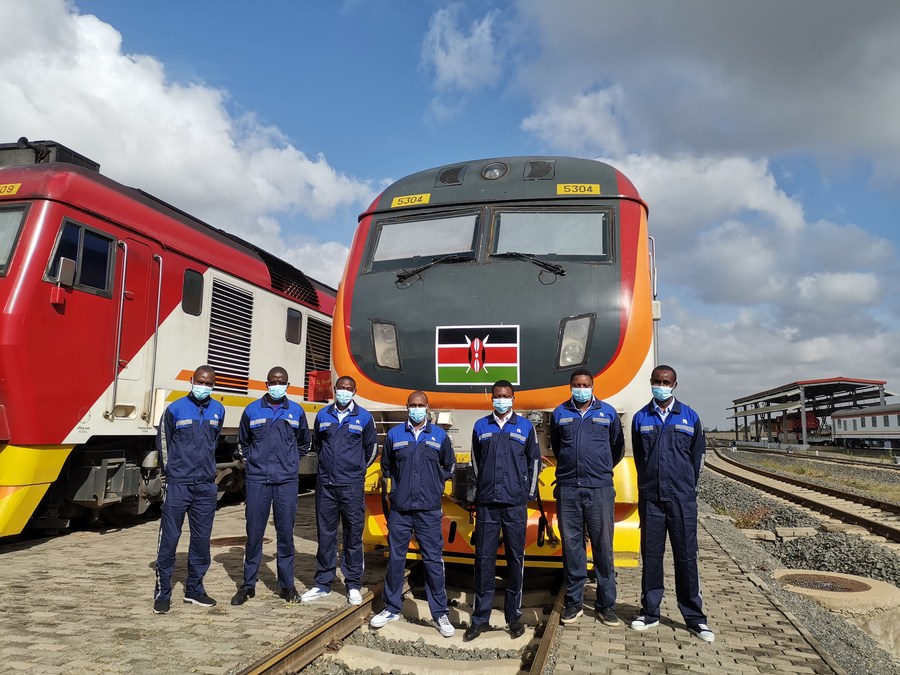
Members of the first cohort of independent Kenyan locomotive drivers pose for a group photo in Nairobi, Kenya, Feb. 19, 2022. (Xinhua)
LESS TIME ON ROAD, MORE OPPORTUNITIES
With the SGR, Mghoi is able to reach her destination on time and negotiate for a potential business opportunity with ease. She said the punctuality has helped her cement trust and confidence with her clients.
Mghoi belongs to a growing army of Kenyan skilled labor force, entrepreneurs and tourists who have embraced the SGR service.
The Mombasa-Nairobi SGR and the additional 120-km Nairobi-Naivasha SGR have also facilitated the hauling of bulk cargoes to the hinterlands.
With the SGR freight service, it takes eight hours to transport bulk cargoes like raw materials from the Mombasa port to an inland container depot in Nairobi, as opposed to around two days using the century-old Meter Gauge Railway constructed by British colonialists, said Edward Opiyo, terminal manager at Nairobi Freight Terminals Limited, a logistics firm.
As logistics firms are now able to transport bulk cargoes in a speedy, cheaper, efficient and environmentally-friendly manner, they have built a cordial relationship with major clients, Opiyo said.
Transit hours and the cost of hauling bulk cargoes to neighboring landlocked countries have also been reduced, injecting fresh vitality into regional supply chains, he said.
The SGR has enhanced Kenya's trade with neighboring countries and offered an economic lifeline to member states of the East African Community, said Mainga.
In the last five years, the modern railway has transported 20 million tons of cargoes and about 8 million passengers, elevating Kenya's status as a regional manufacturing, trade and logistics hub, he noted.
"I must say we are lucky. We are doing more exports and diversification of goods than before. We are seeing a dynamic change due to what the SGR is doing in terms of exports," he said.
The Mombasa-Nairobi SGR is projected to contribute 2-3 percent to Kenya's GDP, said Mainga, adding that the railway has become a dominant player in Kenya's pursuit of inclusive growth, as it has revolutionized transportation of passengers and bulk cargoes, stimulated commerce and investments and fostered job creation for local youth.
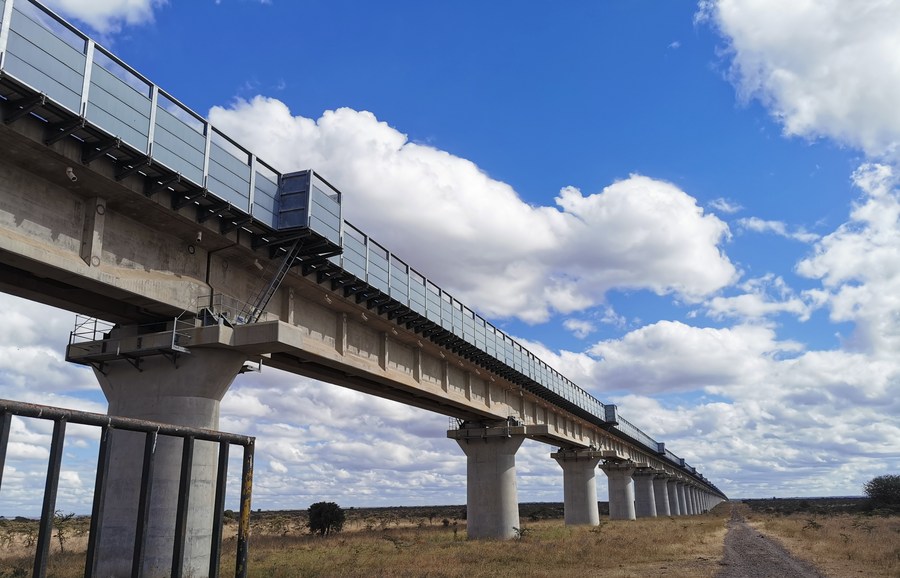
Photo taken on July 20, 2022 shows the Nairobi National Park Super Major Bridge equipped with noise deflectors along the Mombasa-Nairobi Railway in Nairobi, Kenya. (Afristar/Handout via Xinhua)
MUTUAL UNDERSTANDING, RESPECT, TRUST
Mainga said the SGR is also benefiting local people as skills transfer has reached 80-90 percent.
"Now our people are able to run the operations, to drive their locomotives, to carry on with signal work, to repair and maintain our wagons," he said.
Recruited in 2017 by the SGR operator Afristar Railway Operation Company, Harrison Kinyanjui, a 26-year-old economics major, has received rigorous training on railway operation and management from Chinese tutors, and progressed quickly to become the first Kenyan to work at the SGR dispatch center in Nairobi.
Currently the assistant superintendent of the center, Kinyanjui said their work is to organize train operations using a centralized traffic control system in the center, which is "the brain and heart for all SGR train operations."
"The Chinese experts have taught us very well. They now have the confidence to leave us to work independently, and we are very, very proud that we came here not knowing anything about train dispatching, but we are now very competent," he said.
"You see the Kenyan government and the Chinese government work together. We want to thank both governments for the support they have given us," said Mainga.
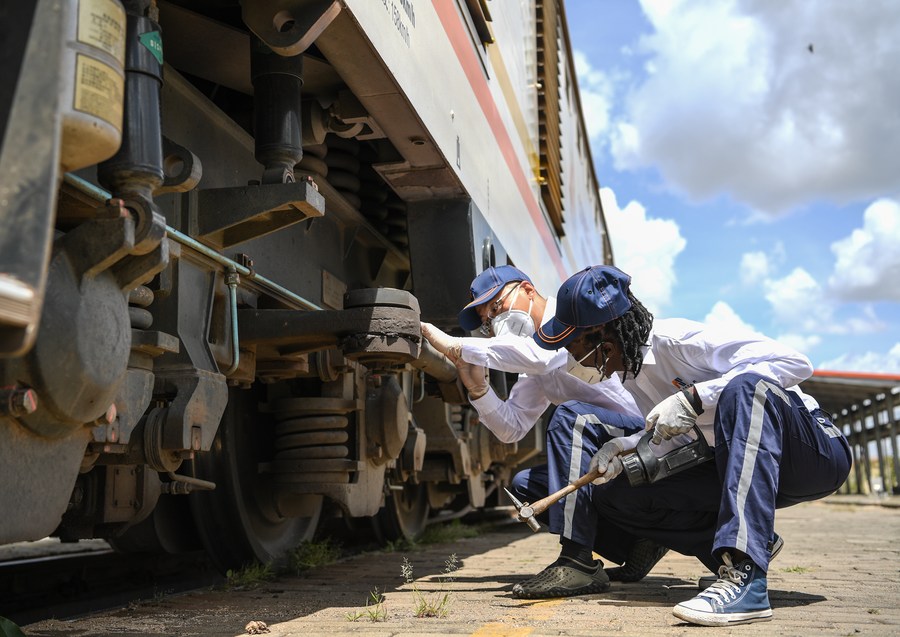
Chinese instructor Yang Ming (L) and his Kenyan female apprentice Concilia inspect the locomotive in Nairobi, Kenya, on March 22, 2021. (Xinhua/Li Yan)
As Afristar has been committed to prioritizing safe operation, boosting movement of passengers and goods and enhancing localization, the SGR's socio-economic outcomes have gained trust and recognition by the Kenyan government and people, Li Jiuping, general manager of Afristar, told Xinhua.
"To create high-performing Sino-Kenyan teams, Afristar fosters cross-cultural working relationships and promotes mutual understanding, respect and trust," Li said.
Ugandan President Yoweri Museveni is the first visiting head of state to travel by Kenya's SGR in March 2019. He said the enhanced efficiency in handling cargoes has been beneficial to the economies of both Kenya and Uganda, and to other countries that depend on the Mombasa port for import and export, including Rwanda, Burundi, South Sudan and the Democratic Republic of Congo.
Within the framework of the Forum on China-Africa Cooperation, the SGR is among many China-Kenya infrastructure cooperation projects which are leading the Sino-Africa cooperation, Chinese Ambassador to Kenya Zhou Pingjian told Xinhua.
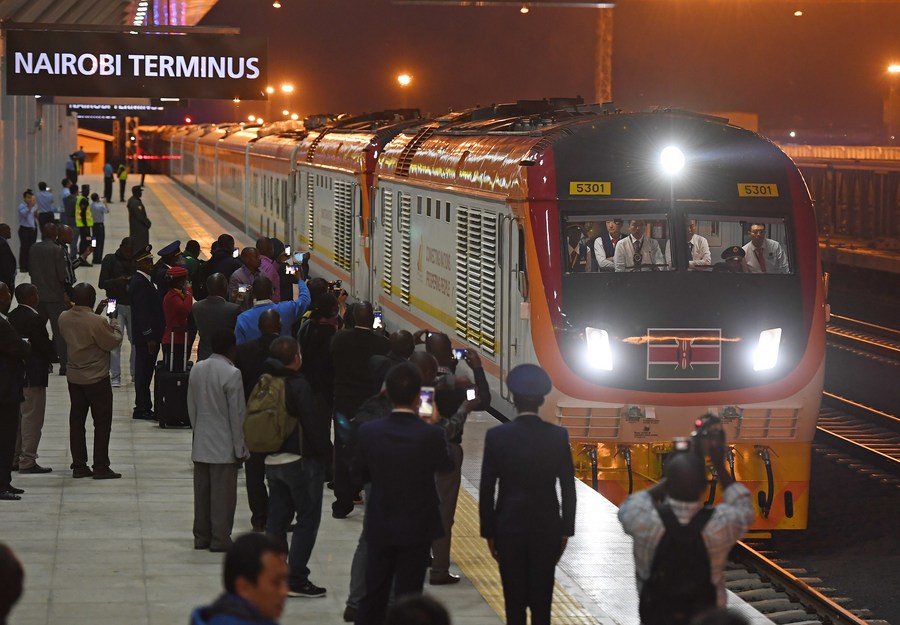
The first train of the Mombasa-Nairobi Standard Gauge Railway (SGR) arrives at Nairobi Terminus in Nairobi, Kenya, May 31, 2017. (Xinhua/Chen Cheng)






